Potrebujeme váš súhlas na využitie jednotlivých dát, aby sa vám okrem iného mohli ukazovať informácie týkajúce sa vašich záujmov. Súhlas udelíte kliknutím na tlačidlo „OK“.
ASTM D4508-10
Standard Test Method for Chip Impact Strength of Plastics (Withdrawn 2016)
Automaticky preložený názov:
Štandardná skúšobná metóda pre Chip rázovej húževnatosti plastov
NORMA vydaná dňa 1.4.2010
Informácie o norme:
Označenie normy: ASTM D4508-10
Poznámka: NEPLATNÁ
Dátum vydania normy: 1.4.2010
Kód tovaru: NS-27522
Počet strán: 6
Približná hmotnosť: 18 g (0.04 libier)
Krajina: Americká technická norma
Kategória: Technické normy ASTM
Kategórie - podobné normy:
Anotácia textu normy ASTM D4508-10 :
Keywords:
breaking energy, cantilever impact, chip impact strength, impact plastics, impact testing, microcracks, pendulum, plastics, small specimen impact, weathered impact strength, Chip impact strength, Environmental control/fate, Cantilever testing, Exposure tests--plastics, Impact resistance--plastics, Impact testing--plastics, Microcracks, Outdoor weathering, Pendulum test, Solvents, Weathered impact strength, Weathering (plastics), ICS Number Code 83.080.01 (Plastics in general)
Doplňujúce informácie
| Significance and Use | ||||||||||||||
|
The chip-impact test is a variation of the Izod impact test described in Test Methods D256. The specimen geometry has been chosen to fit three basic criteria as follows: The specimen is relatively thin and is struck on the broad surface so that the test result is sensitive to the condition of the surface, The specimen is relatively small for efficient utilization of space in accelerated testing media or devices and to minimize amounts of material needed for testing, and The specimen can be tested using a standard Izod pendulum tester. It has been found that a 12.7-mm (0.500-in.) wide strip with a thickness in the range from 1.02 to 3.18 mm (0.040 to 0.125 in.) meets the above criteria. Much experimental work on 1.78-mm (0.070-in.) strips has demonstrated the utility of the chip-impact test to track weather aging of a variety of materials. The distance (L) between clamping and impact points (striker height) will affect test results. Extensive experimental work has established that a ratio of L = 2.182 h (where L is the distance between clamping and impact points and h is the thickness of the specimen) will provide accurate and sensitive chip-impact values. Increasing this ratio (that is, raising the striker height for a given thickness) lowers chip-impact values and reduces sensitivity of the test. Decreasing the above ratio (that is, lowering the striker height for a given thickness) results in a shearing of the specimen rather than the desired bending and breaking. In general, the chip-impact value during weathering varies according to specimen thickness, even after adjusting striker heights for constant deflection, as given in Table 1. Report the thickness of the specimen, along with the test values, making comparisons only between samples with similar thickness. The standard Izod Methods A, C, D, and E
require that the type of failure for each specimen be recorded as
one of the four coded categories defined as follows: |
||||||||||||||
| 1. Scope | ||||||||||||||
|
1.1 The purpose of this test method is to provide an impact test that can be performed on small specimens of plastics of different thicknesses. This test method is especially suited for observing the effects of microcracks caused by weathering, or by exposure to solvents or other hostile environments, on the surface of plastic materials. It is not meant to be used as a replacement for any existing impact test, but can be used to measure impact on coupons machined from finished parts that cannot be tested by the drop-weight, Izod, or Charpy method because of shape or thickness limitations. 1.2 The chip-impact test is run on small, flat, unnotched specimens using a standard pendulum-impact device. The test places the impacted surface in tension and, for notch-sensitive materials, is extremely sensitive to the presence of surface microcracks. Thus, for plastics that develop surface cracks when exposed outdoors, the chip-impact test is a severe test of the weathered impact strength. 1.3 Round-robin testing has indicated that materials that break at total energy values of less than 0.17 joules (1.5 in.-lbf) have within-laboratory coefficients of variation of approximately 30 %. Therefore, such values are considered out of the normal testing range for this test. 1.4 The values stated in SI units are to be regarded as standard. The values given in parentheses are for information only. 1.5 There is no known ISO equivalent to this test method. 1.6 This standard does not purport to address all of the safety concerns, if any, associated with its use. It is the responsibility of the user of this standard to establish appropriate safety and health practices and determine the applicability of regulatory limitations prior to use. |
||||||||||||||
| 2. Referenced Documents | ||||||||||||||
|
Podobné normy:
Historická
1.10.2010
Historická
1.12.2011
Historická
15.3.2007
Historická
15.3.2007
Historická
1.9.2006
Historická
1.3.2007
Odporúčame:
Aktualizácia technických noriem
Chcete mať istotu, že používate len platné technické normy?
Ponúkame Vám riešenie, ktoré Vám zaistí mesačný prehľad o aktuálnosti noriem, ktoré používate.
Chcete vedieť viac informácií ? Pozrite sa na túto stránku.


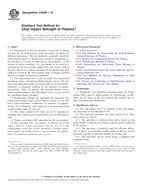
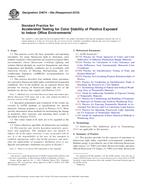 ASTM D4674-02a(2010)..
ASTM D4674-02a(2010)..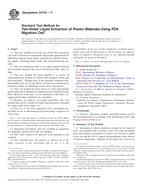 ASTM D4754-11
ASTM D4754-11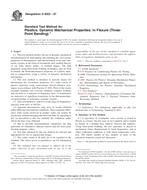 ASTM D5023-07
ASTM D5023-07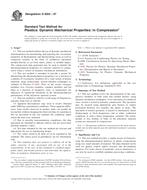 ASTM D5024-07
ASTM D5024-07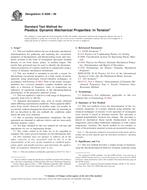 ASTM D5026-06
ASTM D5026-06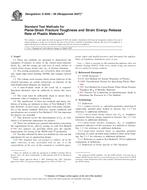 ASTM D5045-99(2007)e..
ASTM D5045-99(2007)e..
 Cookies
Cookies
